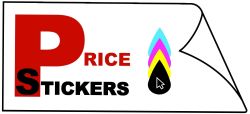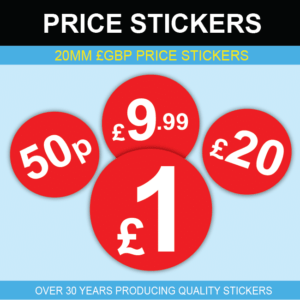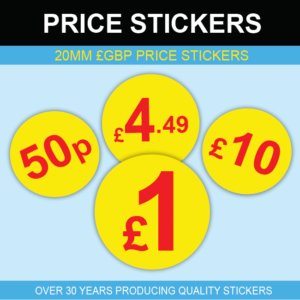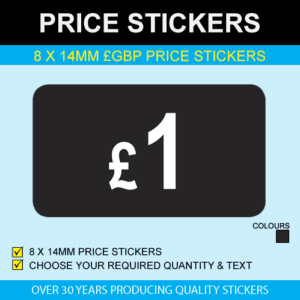How to Remove Stickers: Tips and Techniques for Easy Sticker Removal
Stickers have become a popular choice for individuals, businesses, and various industries across the UK. They are easy to apply and serve different purposes. However, removing stickers can be a challenging task. Whether you need to remove price tags from products or get rid of old decorative stickers, it’s important to know effective techniques for sticker removal. In this comprehensive guide, we will explore three main methods: “Pressing, Rubbing & Scraping,” “Soapy Water & Vinegar,” and “Household Products.” Each method caters to different types of self-adhesive residues, ensuring successful sticker removal.
Rubbing, Pressing, and Scraping
One of the simplest techniques to remove stickers is to rub the affected area with your finger. This method works well for less resilient residues. The friction created by rubbing helps break down the adhesive, making it easier to remove the sticker. If rubbing alone doesn’t fully remove the sticker, try using a bank card or a similar object. Place the card flat against the surface and apply pressure to scrape off the sticker. However, be cautious as this method may scratch delicate surfaces. If the sticker persists or leaves behind residue, use tape around your finger and press it against the remaining material to lift it off.
Soapy Water & Vinegar
For stickers on glass or jars, submerging the object in warm soapy water is an effective approach. Fill a basin or sink with warm water and add a few drops of dish soap. Place the object in the soapy water and let it soak for a few minutes. This will help loosen the adhesive bond. After soaking, use a credit card, scourer, or sponge to rub against the sticker. The combination of the water and friction will help remove most, if not all, of the sticker material. For tougher self-adhesives that leave residue even after the soapy water method, vinegar comes to the rescue. Vinegar is suitable for use on materials like glass and can effectively remove most stickers and residues. Simply dampen a cloth with white vinegar and rub it against the sticky residue until it lifts off.
Household Products
Many household products can help remove stickers. Items such as cooking oil, specially designed food sticker removers, mayonnaise, and peanut butter are readily available in most homes and can be used to remove stickers. These products contain oils that help break down the adhesive residue. To use this method, apply a small amount of the chosen product to the sticker or residue. Allow it to sit for a few minutes to penetrate the adhesive. Then, use a cloth or sponge to gently rub the sticker or residue until it comes off. The oil in these products helps dissolve the adhesive, making it easier to remove. However, it’s important to read warning labels and test the product on an inconspicuous area to ensure it won’t cause any marks or stains. Cleaning products, for example, may contain bleach that can damage certain materials or fabrics.
How to Remove Sticker Residue
After removing the sticker, you may find sticky residue left behind. This residue can be stubborn and require additional techniques for removal. Here are a few effective methods to remove sticker residue:
a) Warm White Wine Vinegar or Rubbing Alcohol: Soak a paper towel in warm white wine vinegar or use room temperature rubbing alcohol. Lay the towel over the residue and let it sit for a couple of minutes. This softens the residue, making it easier to scrub away. Afterward, use a cloth or sponge to gently scrub the area until the residue is completely gone. Rinse the surface with water and dry it thoroughly.
b) WD-40: Another popular option for removing sticker residue is WD-40. However, exercise caution when using this product and follow these steps carefully. Spray a small amount of WD-40 directly onto the residue. Let it sit for a minute or two to allow the WD-40 to penetrate the residue. Then, use a cloth or sponge to gently rub the area until the residue lifts off. Once the residue is removed, clean the surface with mild soap and water to remove any WD-40 residue.






